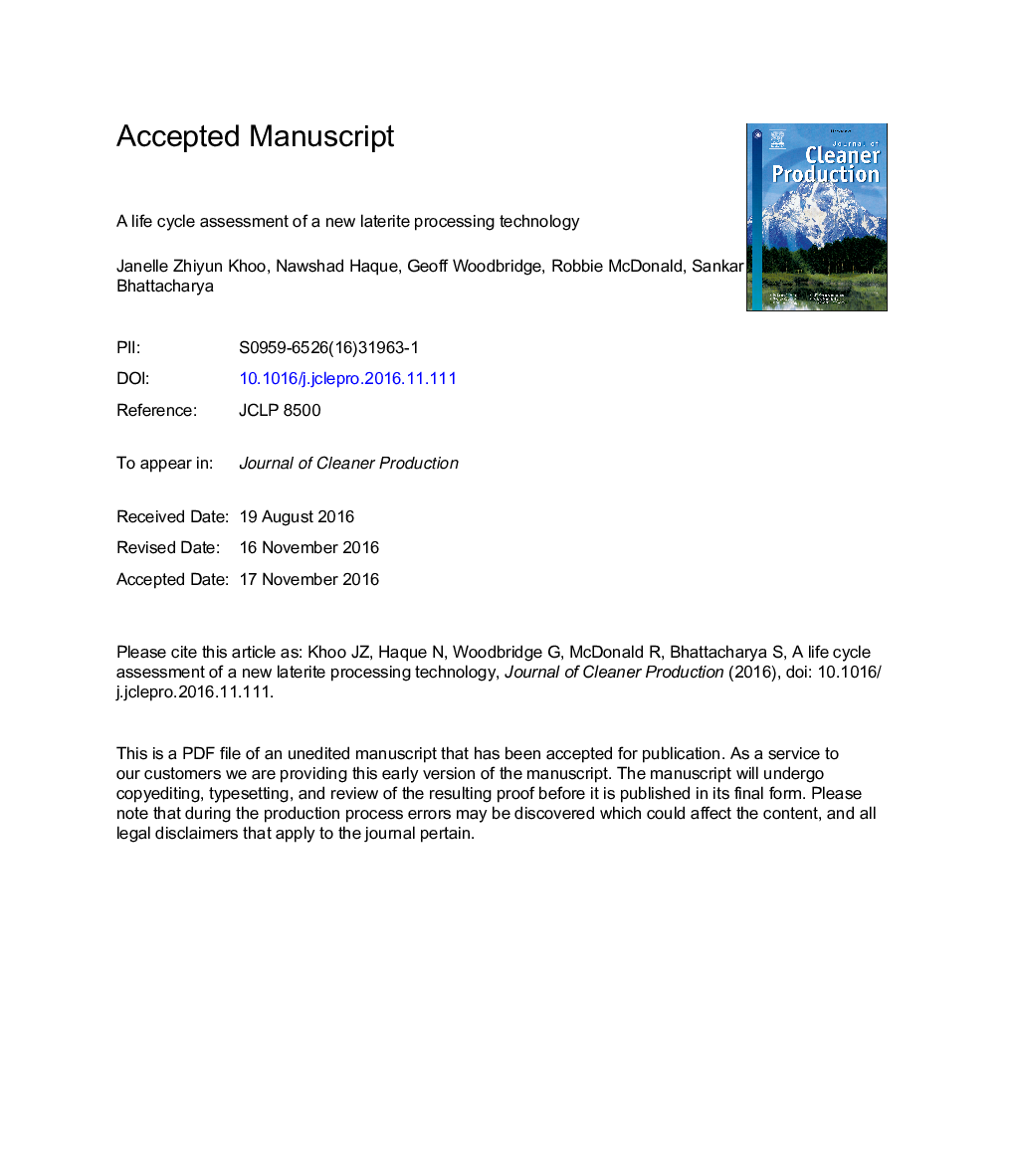| Article ID | Journal | Published Year | Pages | File Type |
|---|---|---|---|---|
| 5480350 | Journal of Cleaner Production | 2017 | 36 Pages |
Abstract
This paper presents a life cycle assessment (LCA) study of three nickel laterite processing technologies. The main goal was to quantify selected environmental impact categories and to compare and analyse each impact category for three different nickel feedstock for stainless steel production. The nickel laterite processing routes were (1) high pressure acid leaching (HPAL), (2) ferronickel, and (3) the newly developed Direct Nickel (DNi Process) that involves atmospheric leaching of nickel laterite using nitric acid. A cradle to gate approach was adopted. A functional unit of one tonne stainless steel was chosen. The scope covered was from laterite ore mining to final metal production. All inventory data was expressed in units per tonne nickel-based feedstock. The flow sheets for each technology were developed and the system boundaries were clearly defined. It was found that Ferronickel has the highest global warming potential and non-renewable energy scores whereas HPAL has the highest water depletion score. Overall, the DNi Process is found to be a more sustainable processing route as it produces less airborne emissions compared to the other two routes. Nitric acid is also less toxic compared to sulphuric acid used in HPAL. The DNi Process is also able to process different types of laterite ores (from limonitic to saprolitic ores) which is an important feature for future nickel production.
Keywords
Related Topics
Physical Sciences and Engineering
Energy
Renewable Energy, Sustainability and the Environment
Authors
Janelle Zhiyun Khoo, Nawshad Haque, Geoff Woodbridge, Robbie McDonald, Sankar Bhattacharya,
